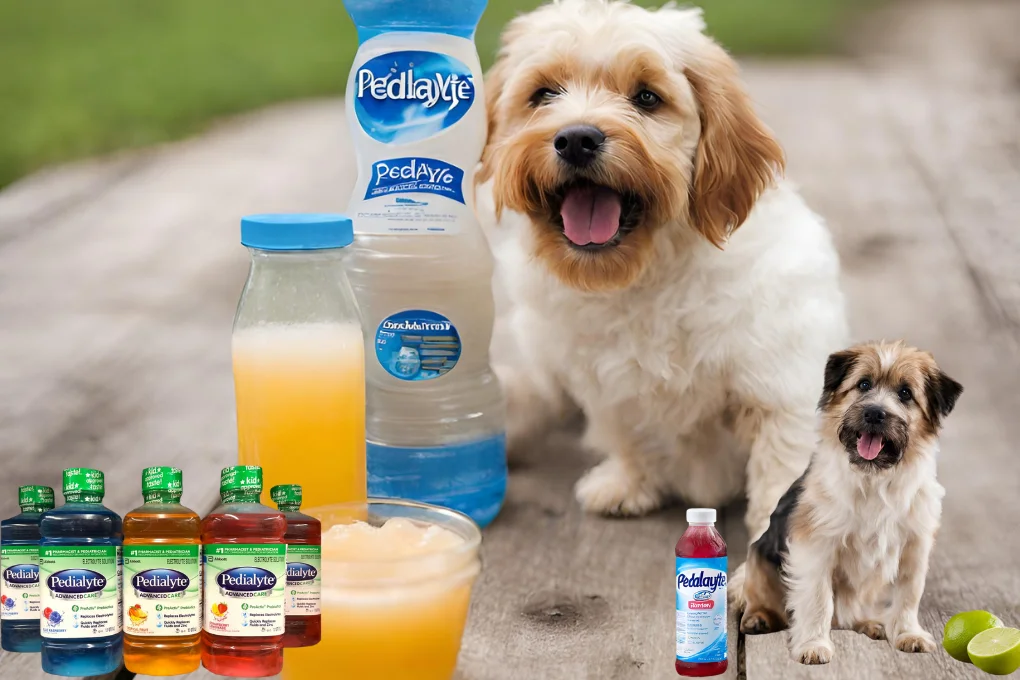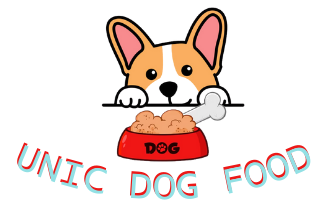As a pet parent, I understand the importance of keeping my furry family happy, healthy, and hydrated.
Just like humans, dogs can sometimes need a little extra help to maintain proper hydration levels, especially during hot weather, illness, or after strenuous exercise.
That’s where a homemade Pedialyte recipe for dogs comes into play.
Not only is it a cost-effective way to support your dog’s hydration, but it’s also easy to make and tailored to your dog’s taste.
What is Pedialyte for Dogs?
Pedialyte is an electrolyte solution commonly used in humans to prevent dehydration and replenish fluids and minerals lost through vomiting, diarrhea, or excessive sweating.
Similarly, a canine-friendly version of Pedialyte can help dogs maintain their electrolyte balance during mild to moderate dehydration.
When to Use Pedialyte for Dogs?
Before administering Pedialyte to your dog, it’s essential to recognize the signs of dehydration, including lethargy, dry mouth, excessive panting, and reduced skin elasticity.
While Pedialyte can help with mild cases, it’s crucial to consult your veterinarian if your dog shows severe symptoms of dehydration or if the condition persists.
Understanding Dehydration in Dogs
Dehydration in dogs can occur due to various reasons, such as vomiting, diarrhea, or excessive heat.
It’s crucial to recognize the early signs of dehydration, which include lethargy, dry gums, excessive drooling, and decreased skin elasticity.
Immediate action is required to prevent further health complications.
The Importance of Electrolytes
Electrolytes, including sodium, potassium, and chloride, are vital in maintaining physiological balance within your dog’s body.
They aid nerve and muscle function, hydration levels, and pH balance.
When dogs are dehydrated, their electrolyte balance is disrupted, necessitating prompt restoration.

Homemade Pedialyte Recipe For Dogs
Ingredients
To prepare a homemade Pedialyte solution for your dog, you will need:
- 4 cups of filtered water
- 1 teaspoon of sugar
- 1 teaspoon of salt
- A dash of potassium chloride (optional, available as a salt substitute)
Instructions
1. Boil the water to ensure it’s purified.
2. Dissolve the sugar and salt in the water completely.
3. Add potassium chloride if available.
4. Cool the solution to room temperature before offering it to your dog.
5. Serve: Offer the solution to your dog in small amounts at a time. You can use a spoon or a syringe (without the needle) to administer it gently into your dog’s mouth if they’re not drinking voluntarily.
6. Storage: Store any leftover solution in the refrigerator for up to 24 hours. Discard any unused solution after this period.
Dosage and Administration
Offer the homemade Pedialyte solution to your dog in small amounts every few hours. The quantity should be adjusted based on the size of your dog.
For small dogs, start with 1-2 tablespoons every hour; for larger dogs, a quarter to a half cup every hour.
Monitor your dog’s intake and ensure they are not drinking too rapidly to prevent vomiting.
When to Consult a Veterinarian?
While the homemade Pedialyte recipe can be beneficial, it is not a substitute for professional veterinary care.
If your dog shows severe signs of dehydration or the symptoms persist, it is imperative to consult a veterinarian promptly.
Preventing Dehydration in Dogs
Preventing dehydration is always preferable to treating it. Ensure your dog has constant access to fresh, clean water.
Encourage your dog to drink regularly during hot weather or after intense exercise.
Recognize the signs of dehydration early and take immediate action to rehydrate your dog.
Can Dogs Drink Pedialyte?
Yes, dogs can drink Pedialyte. I recommend it for helping with mild dehydration, especially under the guidance of a vet.
It’s crucial to choose unflavored or dog-safe flavors. Remember, moderation is key, and it shouldn’t replace water.
Always consult your vet first to ensure it suits your dog’s health needs.
What Kind Of Pedialyte Should I Give My Dog?
When giving Pedialyte to your dog, opt for the unflavored version to ensure safety.
Flavored Pedialyte often contains artificial sweeteners, colors, and flavors that might not be suitable for your pet.
Specifically, avoid any product containing xylitol, an artificial sweetener toxic to dogs.
Always consult your veterinarian before introducing Pedialyte or any new supplement to your dog’s diet to confirm it’s a safe and appropriate choice for your pet’s specific health condition.
Is Pedialyte Safe For Dogs?
Yes, Pedialyte is generally safe for dogs in small amounts and can help rehydrate them, especially under a vet’s guidance.
It’s important to use the unflavored version, as some flavors may contain ingredients that aren’t safe for dogs.
Always consult your veterinarian first to ensure it’s appropriate for your dog’s specific health situation and to determine the correct dosage.
How Do I Know If My Dog Needs Pedialyte?
Knowing when your dog might need Pedialyte involves watching for signs of dehydration.
These signs can include lethargy, dry gums, excessive panting, loss of appetite, and decreased skin elasticity (when you gently pinch your dog’s skin, it doesn’t quickly return to its original position).
If your dog has been vomiting, has diarrhea, or refuses to drink water, these could also indicate dehydration and a potential need for Pedialyte.
Can My Dog Have A Bad Reaction To Pedialyte?
Yes, while Pedialyte is generally safe for dogs when used appropriately, some dogs may react badly to it.
This could be due to various reasons, such as ingredient sensitivities or incorrect dosages.
Signs of a bad reaction might include vomiting, diarrhea, or worsening dehydration symptoms.
If you notice any adverse effects after giving your dog Pedialyte, you must stop offering it and consult your veterinarian immediately.
Always start with a small amount, closely monitor your dog’s response, and consult with your vet beforehand to ensure it’s suitable for your pet.
Conclusion
Maintaining your dog’s hydration is paramount for their health and well-being. The homemade Pedialyte recipe in this article is a practical and effective solution for preventing dehydration in dogs.
A homemade Pedialyte solution can be a handy addition to your pet care toolkit, helping your dog stay hydrated during those crucial times.
Remember, the health and well-being of your dog should always come first. Consulting with a professional veterinarian is the best course of action when in doubt.
Stay tuned to unicdogfood.com for more pet care tips, recipes, and advice tailored to keeping your canine companions healthy and happy!
- Homemade Bone Broth For Dog Recipe - December 17, 2025
- Can You Cook Raw Dog Food? - September 10, 2025
- Homemade No-Bake Dog Treat Recipes Your Pup Will Love - September 6, 2025
